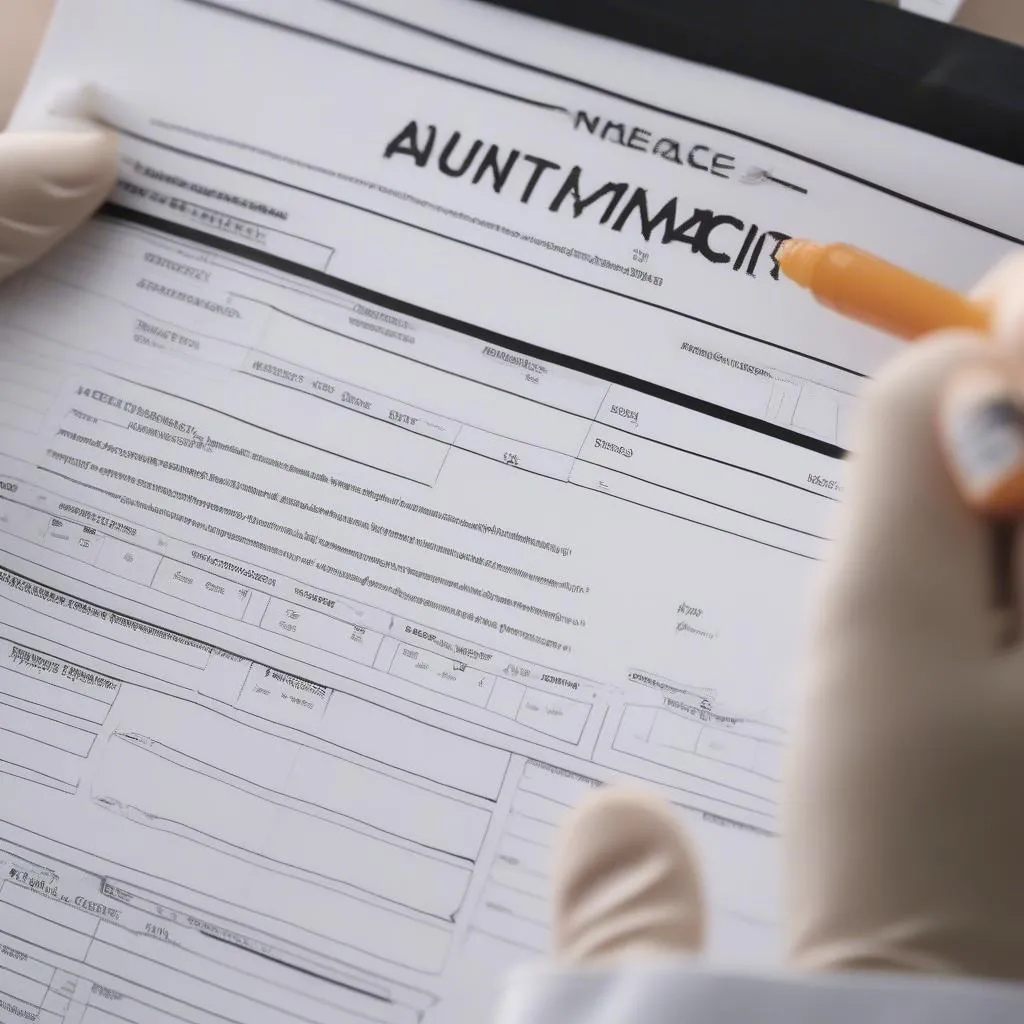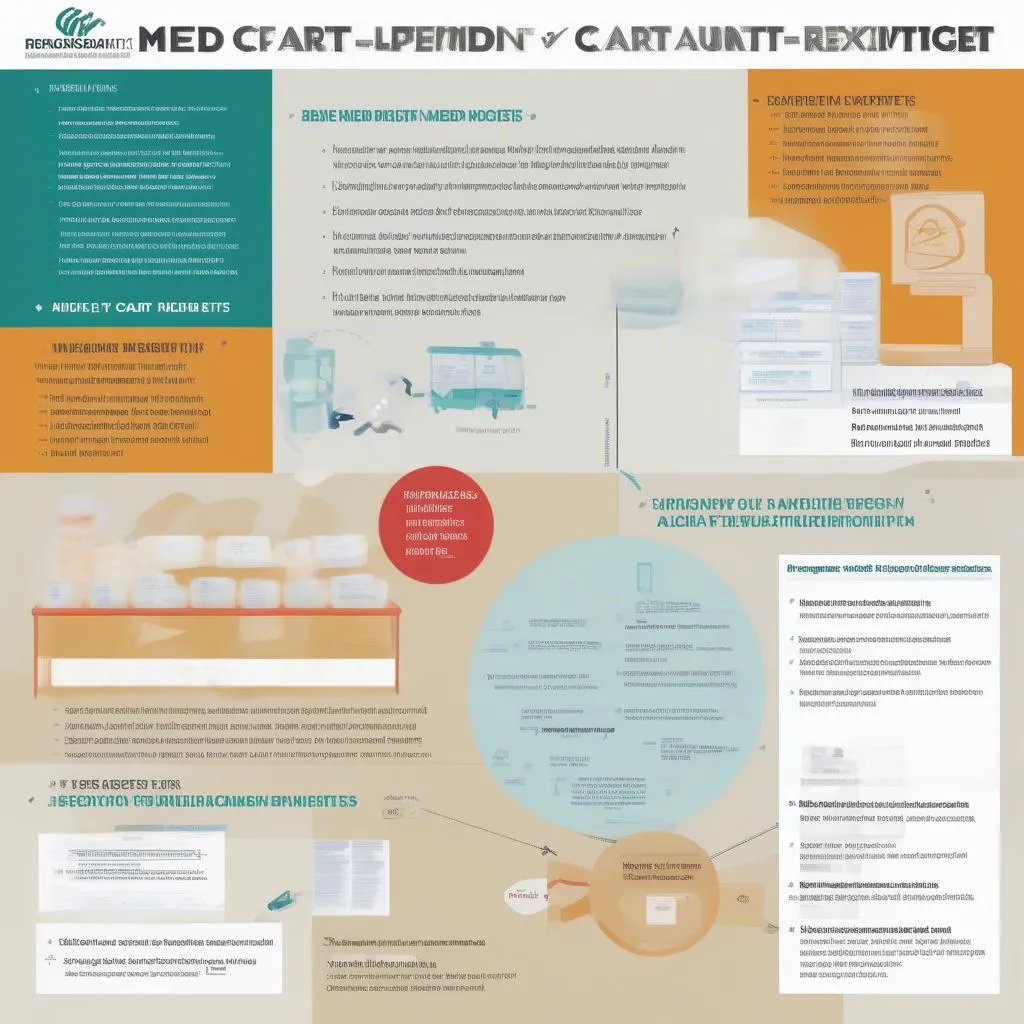Imagine a busy nursing home, bustling with activity. Nurses are rushing to administer medications, ensuring that each resident receives the correct dosage at the right time. In this fast-paced environment, it’s crucial to have a system in place to guarantee accuracy and prevent medical errors. This is where the “med cart audit form” plays a vital role.
What is a Med Cart Audit Form?
A med cart audit form is a standardized document used in long-term care facilities to assess the accuracy and safety of medication administration. It’s a critical tool for ensuring that the medications dispensed to residents are correct, properly labeled, and administered in accordance with their prescribed dosages.
Importance of Med Cart Audits:
From a professional perspective, med cart audits are essential for:
- Maintaining patient safety: By verifying medication accuracy, med cart audits minimize the risk of medication errors that can lead to serious adverse events.
- Ensuring compliance: These audits ensure that the facility adheres to regulatory guidelines and standards set by organizations like the Centers for Medicare & Medicaid Services (CMS).
- Identifying and mitigating potential risks: Regular audits can help detect and address potential medication errors, improve medication storage and management practices, and enhance overall medication safety.
From a technical perspective, med cart audits involve:
- Inspecting the medication cart: This includes verifying that all medications are present, correctly labeled, and stored appropriately.
- Reviewing medication records: Auditors compare the medications on the cart to the residents’ individual medication orders, ensuring accuracy and completeness.
- Checking expiration dates: This step ensures that no expired medications are dispensed to residents.
- Assessing documentation: The audit form documents any discrepancies or deviations found, allowing for corrective actions to be taken.
How to Conduct a Med Cart Audit:
Step 1: Prepare the Audit Form:
- Gather the necessary forms and documentation, including a master medication list, current medication orders, and a med cart audit form.
- Identify the specific residents whose medication carts are being audited.
- Ensure that the audit form is up to date and includes relevant information.
Step 2: Inspect the Medication Cart:
- Visually inspect the medication cart for any signs of damage or contamination.
- Verify that all medications are present and in their proper containers.
- Check that each medication is labeled correctly with the resident’s name, medication name, dosage, and administration time.
Step 3: Review Medication Records:
- Compare the medications on the cart to the residents’ individual medication orders.
- Verify that the medication name, dosage, and frequency match the orders.
- Ensure that the medication is being administered at the correct time.
- Check for any discrepancies or inconsistencies.
Step 4: Check Expiration Dates:
- Inspect each medication container for an expiration date.
- Ensure that no expired medications are on the cart.
- Remove and dispose of any expired medications properly.
Step 5: Document Findings:
- Record all observations and findings on the med cart audit form.
- Note any discrepancies, errors, or potential risks.
- Identify corrective actions that need to be taken.
- Include the date and time of the audit.
Common Questions About Med Cart Audit Forms:
Q: What are the benefits of using a med cart audit form?
A: Using a med cart audit form brings several benefits:
- Standardization: The form provides a consistent framework for conducting audits, ensuring that all aspects are covered.
- Documentation: The form serves as a valuable record of the audit, allowing for tracking of any issues and corrective actions taken.
- Evidence: In the event of a medication error, the audit form can provide evidence of adherence to safety protocols.
Q: How often should med cart audits be performed?
A: The frequency of med cart audits may vary depending on the facility’s policies and regulatory requirements. However, a minimum of weekly audits is generally recommended.
Q: Who should perform med cart audits?
A: Med cart audits can be conducted by qualified staff members such as registered nurses, pharmacists, or medication technicians. It’s important that the person conducting the audit is familiar with medication administration procedures and can identify potential safety risks.
Conclusion:
Med cart audits are an essential component of a safe medication administration system in long-term care facilities. By ensuring that medication carts are properly prepared, inspected, and documented, we can significantly minimize the risk of medication errors and protect the well-being of our residents.
Want to learn more about med cart audits or other safety protocols in long-term care? Reach out to us today!
 Medical Cart Audit Form
Medical Cart Audit Form
 Med Cart Audit Process
Med Cart Audit Process
 Long-Term Care Facility
Long-Term Care Facility